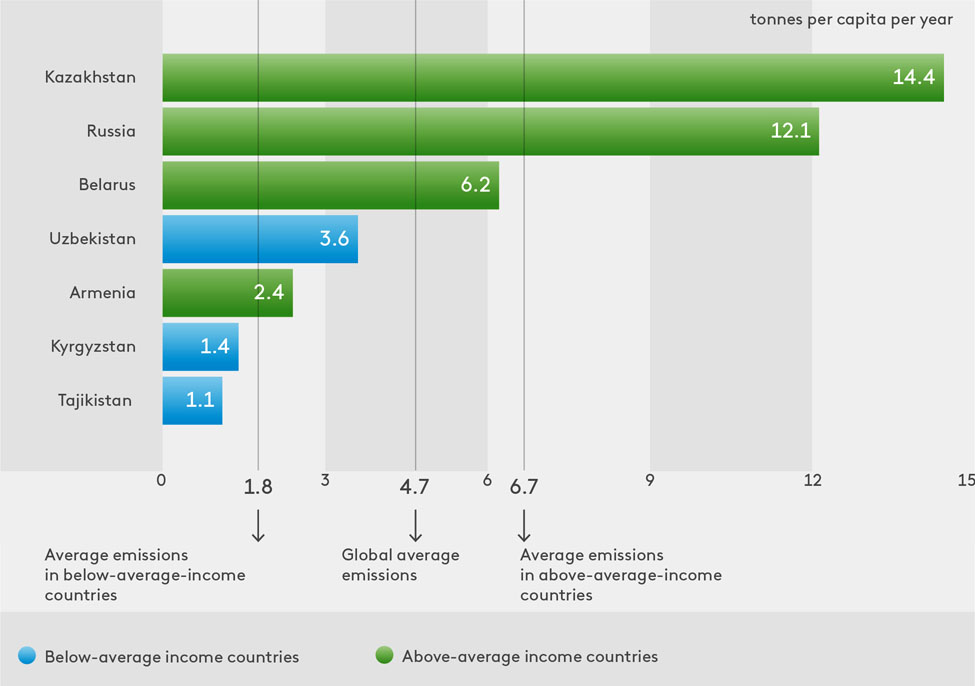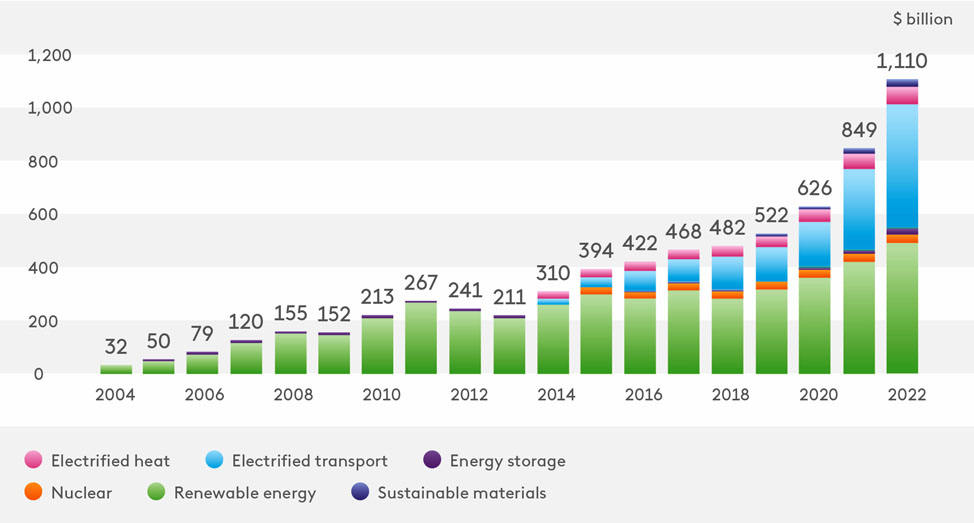The new report by the EDB provides a comprehensive analysis of the challenges and prospects for low-carbon transition in Eurasia, covering EAEU countries, Tajikistan, and Uzbekistan. The analysis includes regulatory and sectoral solutions for climate change adaptation, taking into account the global climate agenda at the UN level, as well as the successful experiences from the EU and ASEAN. It also focuses on the role of international development institutions and sustainable finance in the region’s low-carbon transition.
The green transformation has become a long-term global trend that shapes the socio-economic prospects of countries worldwide, including those in Eurasia. The green agenda encompasses comprehensive measures to adapt to climate change and stimulate reductions in greenhouse gas emissions, with the ultimate goal of achieving carbon neutrality in a phased manner while maintaining the pace of economic development.
Neglecting climate challenges and delaying low-carbon transition leads to significant costs, including higher infrastructure adaptation expenses, and a lower quality of life. Embracing the green transformation brings positive effects, such as the opportunity to modernise industries, energy, and transport, enhance the competitiveness of goods and services, and create high-productivity jobs.
The world is progressing towards green, low-carbon development, and Eurasian countries are no exception. However, it is evident that there is a long way to go. According to the EDB analysts’ calculations, the region’s population-weighted average carbon dioxide emissions in 2021 totalled 9.9 tonnes per capita, nearly twice the global average (4.7). Among the countries in the region, Kazakhstan (14.4) and Russia (12.1) exhibit the highest population-weighted average carbon dioxide emissions in tonnes per capita per year. Kyrgyzstan (1.4) and Tajikistan (1.1) demonstrate the lowest values within the region due to their substantial reliance on hydropower in their energy mix.
The Eurasian region’s contribution to global carbon dioxide emissions is substantial, surpassing its relative weight in the global economy. In 2021, it accounted for 6% of global emissions, while its share of world GDP stood at 3.9% and of the global population at 2.9%. Russia stands as the primary net emitter of carbon dioxide, responsible for 4.7% of global emissions. Coal-fired power generation continues to play a significant role in the region's overall greenhouse gas emissions.
Carbon dioxide emissions per capita in Eurasian countries in 2021, tonnes per capita per year

Evgeny Vinokurov, Chief Economist at the EDB, highlights Eurasia’s four pain points that need to be addressed in the first place: energy, transport, industry, and the urban environment. The immense water and energy potential of Kyrgyzstan, Russia, and Tajikistan make hydropower the cornerstone of green transformation in these countries. Nuclear power, which is included in the taxonomy of green projects in most countries, plays a vital role in the energy transition. The electrification of railways, including those within the Eurasian Transport Network, presents an opportunity for the entire region to reduce its carbon footprint, including from international container transit, and serves as a foundation for the advancement of green mobility. In addition, the region’s countries are taking comprehensive measures to encourage the use of electric vehicles and develop the necessary infrastructure. However, achieving ambitious climate targets will remain challenging without a phased reduction of coal usage as a fuel source.
Eurasian countries are developing and implementing national visions, programmes, and strategies for low-carbon development, with the aim of achieving their climate goals. To effectively execute these plans, the establishment of an ESG financing market becomes crucial. EDB analysts note that the realisation of ambitious climate targets, including those outlined in the Paris Agreement, necessitates a redirection of global capital flows. Implementing green projects, environmentally friendly technologies, and digital solutions to decarbonise and safeguard the environment is capital-intensive. Estimates suggest that individual countries in the region may face costs ranging from $10 billion to $6.5 trillion to achieve carbon neutrality.
While investment in the global energy transition surpassed $1 trillion in 2022 and equalled the cost of fossil fuel production for the first time, the scale of the global low-carbon transition demands even greater investment – at least $4–6 trillion per year according to UN estimates. The need for climate finance is particularly pressing in low- and middle-income countries, which include the Eurasian nations. Government support measures, such as tax incentives and interest rate subsidies for green debt instruments, can stimulate investor demand and facilitate supply from the real sector.
Investment in the energy transition and climate technology, $ billion

Eurasian countries are stimulating the development of a green finance market by devising and implementing criteria (taxonomies) for identifying green projects. The report estimates that the total issuance of ESG bonds in the region reached $4.9 billion in 2022. Kazakhstan and Russia have already adopted their own taxonomies, while Kyrgyzstan and Belarus are in the process of developing taxonomies for sustainable development projects and green finance, respectively. Additionally, the region’s countries are expected to benefit from the model taxonomy of EAEU green projects published in 2023.
The report provides quantitative data that highlights the significant contribution of multilateral development banks (MDBs) to the green agenda in low- and middle-income countries, even though they may not be major players in the global green transformation. In 2021, MDBs allocated climate finance to the tune of $81.7 billion, with over $50.6 billion or 62% directed towards low- and middle-income countries. However, Central Asian countries, in particular, received only 4% of this amount.
Besides financial support, MDBs also assist countries in developing climate projects and assessing climate-related risks and opportunities. They also facilitate private sector investments in green projects by mitigating risks or offering guarantees to reduce them. Therefore, it is crucial to further enhance collaboration of the MDBs, not only in green investment but also in the development, implementation, and improvement of sustainable financing standards, as well as by providing countries with ESG expertise.
You can view the report Global Green Agenda in the Eurasian Region. Eurasian Region on the Global Green Agenda at the EDB website.